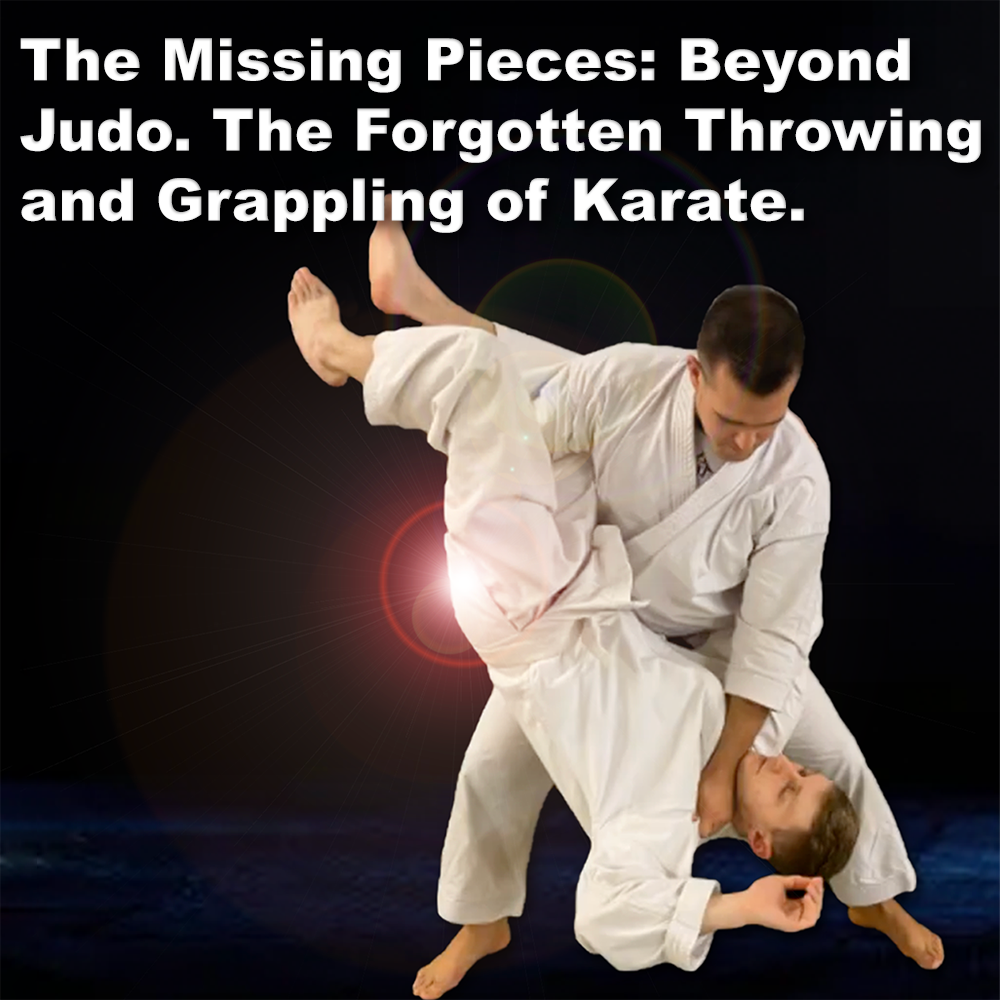
(Approx 2 minute 35 second read)
Kenwa Mabuni, one of Okinawa’s great karate masters, once said, “The karate that has spread to Tokyo is incomplete. Those who believe that karate consists only of kicks and punches, and think throws and joint locks are exclusive to judo or jujutsu, have been misinformed. We should have an open mind and strive to study the complete art.” (Paraphrased)
.
These words highlight a common misunderstanding in modern karate. Many practitioners believe that grappling techniques, such as throws and joint locks, belong solely to arts like judo or jujutsu. As Mabuni pointed out, this belief is incorrect and diminishes the full potential of karate as a self-defense system.
.
Okinawan karate was never just a striking art. Its roots lie in practicality, a comprehensive system. Much of this is preserved in the kata, where movements are designed to work at close range, transitioning seamlessly between striking and grappling.
.
However, as karate was introduced to Japan and adapted for sport and mass instruction, much of its grappling content was either de-emphasized or lost entirely. This evolution has led many karateka to turn to judo or jujitsu to supplement their knowledge of grappling.
.
There are interesting anecdotes of instructors trained on Okinawa who later sought out judo to learn how to apply locks and throws effectively. Given that Okinawa is widely regarded as the ‘birthplace of karate’, one might expect that such knowledge would be readily available.
.
This raises a key question: if Okinawan karate is meant to be a complete system, why was this knowledge missing?
.
It suggests two possibilities. Either their instructor didn’t know these techniques or the full system was not passed down to them. Such stories illustrate how even on Okinawa, the teaching of karate might have started to shift, with some elements becoming de-emphasized or reserved for a select few.
.
If an instructor feels the need to visit another martial art to learn throws or locks, it may indicate that they’ve only been taught the surface of their karate.
.
Many karate practitioners have been exposed to a streamlined or sport-focused version of the art.
.
While effective in certain contexts, this often results in a fragmented understanding, where essential grappling techniques are overlooked.
.
Both judo and jujitsu are designed for controlled environments where scoring points or winning a bout is the goal. Karate’s grappling, on the other hand, is geared toward self-defense, where it’s important to prioritize staying upright – we are not looking to engage in a ground fight.
.
While judo and jujitsu offer distinct methods of applying locks and throws, both arts can still contribute valuable benefits to self-defense – but each in their own way.
.
Karate already contains the tools needed for effective self-protection. The challenge lies in delving deeper into our own traditions to rediscover and integrate these techniques into our practice.
.
More than just a collection of strikes, it’s a complete art, designed for practical self-defense. As karateka, we owe it to ourselves and future generations to study it in its entirety.
.
This means looking beyond the surface and striving to uncover the depth and richness that it offers.
.
If your style or method of training doesn’t include throws, locks, or grappling, it might be prudent to consider why. Could it be that your teacher doesn’t emphasize these techniques, or perhaps they were never taught them themselves? It’s also possible that some aspects of the full system were withheld, either unintentionally or out of selective teaching practices.
.
Whatever the case, this presents an opportunity for exploration and understanding. By asking these questions and seeking out the deeper layers of karate, you may discover a richer understanding of your art – and of yourself.
.
.
Photo Credit: With thanks to Daniel Pyatt.
